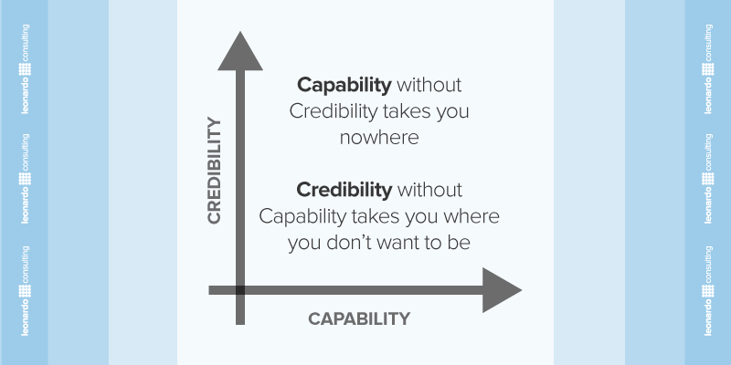
Essential for all of practitioners leading Business Process Management is to maintain the right balance between capability and credibility. BPM leaders must demonstrate, not only that they have the knowledge and tools to deliver effective change, but that they also merit the trust of the organisations they seek to change
Increasing Capability
A common emphasis in organizations is on the development of BPM capability. This can be seen to have two related streams of activity: training and practice. There is a great deal of BPM training available. This includes courses both on general process topics as well as specific http://www.leonardo.com.au/bpm-software-trainingBPM tool training. Personal reading and research, membership of “roundtable” or special interest groups and conference attendance are other examples of capability development via the ‘training’ stream.
The second stream for capability development is just as important. Genuine capability comes from practice and experience.
Practice usually comes in the form of project work – analysing, modelling, improving, explaining and implementing process improvement strategies. Another very important capability enhancement practice involves development and delivery of presentations on BPM topics and discussion of process issues with colleagues and peers.
Improving Credibility
Increasing credibility is a different, and often more difficult, task. Building credibility within an organisation is an internal marketing process. The objective is to have the idea of Business Process Management take route in the organisational culture.
There is no better marketing strategy than to continually report and promote successful projects. Success breeds success. Project selection therefore becomes critical. The “ideal” projects are those that have a reasonable chance of delivering noticeable outcomes. A balance needs to be struck between risk and relevance. Particularly in the early stages, a failed BPM project can sound the death knell for process work. It is equally true that successfully delivering a result that is inconsequential does not promote, and can even damage, credibility.
Senior executive support is needed if a process-aware culture is to develop. The ‘executive floor’, where the credibility needs to be highest, must be a key target of internal marketing.
Other activities can add to the development of credibility: briefings, newsletters, internal BPM forums, invited speakers from external organisations, support for formal study programs, explaining and celebrating successes. It’s about communication - communicating the core messages of BPM, relating them to the particular enterprise and telling the success stories.
Developing credibility is not about spin doctoring. The credibility must be genuine and not just a perception built via slick marketing. Undeserved credibility will not last long but it might just last long enough to do damage to the organisation and to the ‘process idea’.
Sustaining Credibility
Achieving high credibility is not the end of the story. Credibility needs to be sustained. After ‘easy wins’ it may get harder to sustain the attention of the organisation and its senior decision makers. It is also possible for ‘quick wins’ to create unreasonable expectations for following projects. If credibility (and capability) are sustained long enough, process awareness becomes second nature and part of the culture.
An interesting characteristic of high levels of BPM maturity is that process-based management is so ubiquitous as to tend towards invisibility in the sense that there is less conscious awareness of “doing BPM”

Practical and pragmatic plans can be developed and implemented to nurture both capability and credibility. Organisations seeking to achieve effective process-based management should actively manage both vectors.
Making an organisation change-able. Making radical change unremarkable. Allowing change to happen more often, not less. These are hallmarks of contemporary management best practice. Effective BPM requires a continuous balance of Capability and Credibility.




